感動体験レポートアーカイブ
2024.8.29 感動体験レポート セガを代表するIPに成長を遂げた大人のためのエンタテインメント「龍が如く」の軌跡と、さらなる進化に迫る!【後編】

セガサミーグループが時代を超えて追及しているお客様のご期待を超える価値「感動体験」。開発者などのインタビューや特集記事など、ここでしかご覧いただけない様々なレポートをお届けします。
- 感動体験レポート
-
2024.8.29
セガを代表するIPに成長を遂げた大人のためのエンタテインメント「龍が如く」の軌跡と、さらなる進化に迫る!【後編】
ナンバリング1作目の『龍が如く』の誕生から、それまでの「集大成」として発表したナンバリング5作目の『龍が如く5 夢、叶えし者』(以下、『龍が如く5』)までの軌跡を追った【前編】。
【後編】では、初の専用ゲームエンジン開発に取り組んだナンバリング6作目『龍が如く6 命の詩。』(以下『龍が如く6』)から、主人公の交代やゲームジャンル変更に挑んだナンバリング7作目『龍が如く7 光と闇の行方』(以下『龍が如く7』)、2024年2月に発売された最新作のナンバリング8作目『龍が如く8』について、そして「龍が如くスタジオ」のこれからについてもインタビューを行いました。
前編をまだご覧になっていない方は、是非前編からご覧ください。
「セガを代表するIPに成長を遂げた大人のためのエンタテインメント「龍が如く」の軌跡と、さらなる進化に迫る!【前編】」はこちらから。
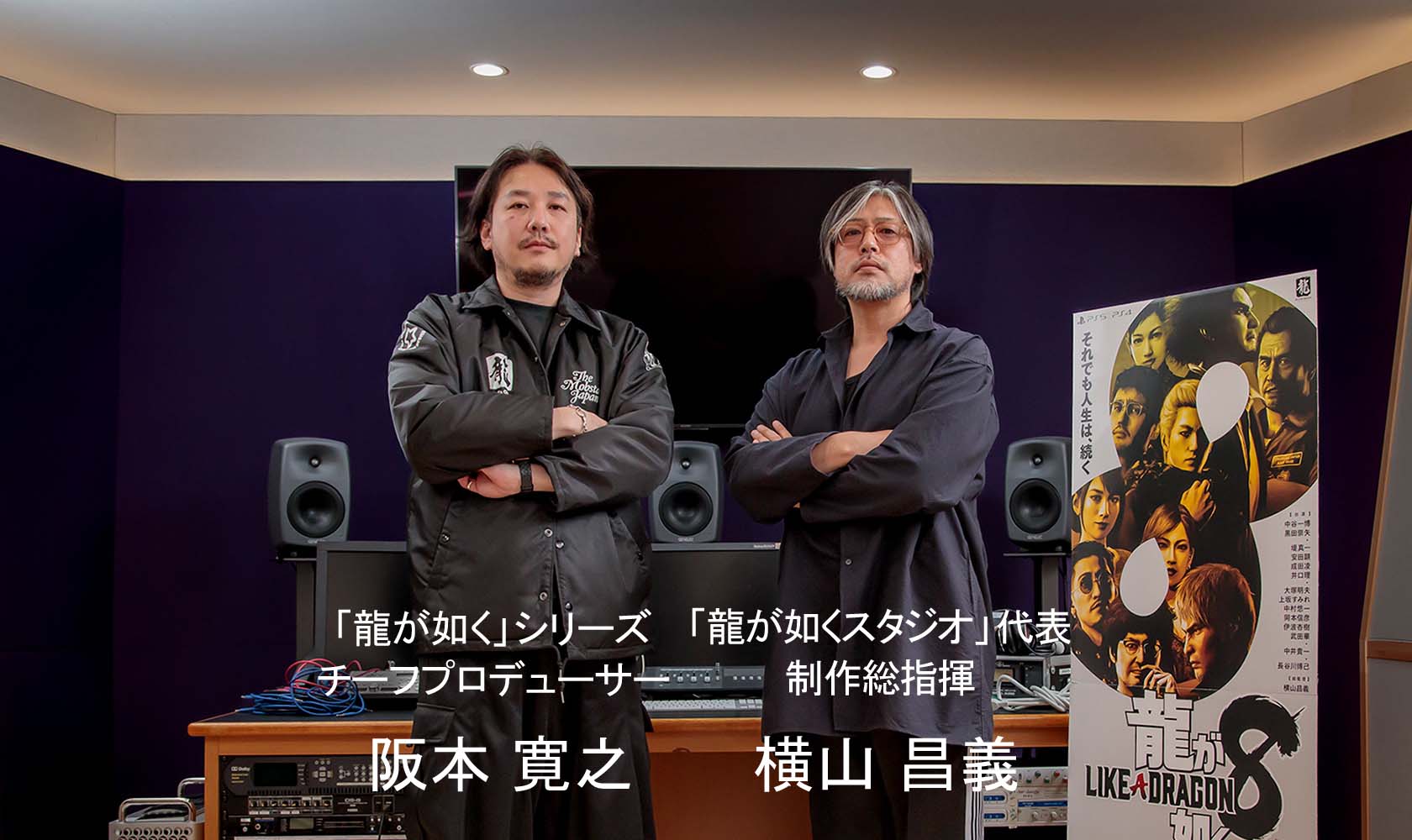
ゲームエンジン開発への挑戦
――2016年12月8日に発売された『龍が如く6』では、技術面でこれまでにない大きなチャレンジをされたとのことですが、詳しくお聞かせいただけますか?
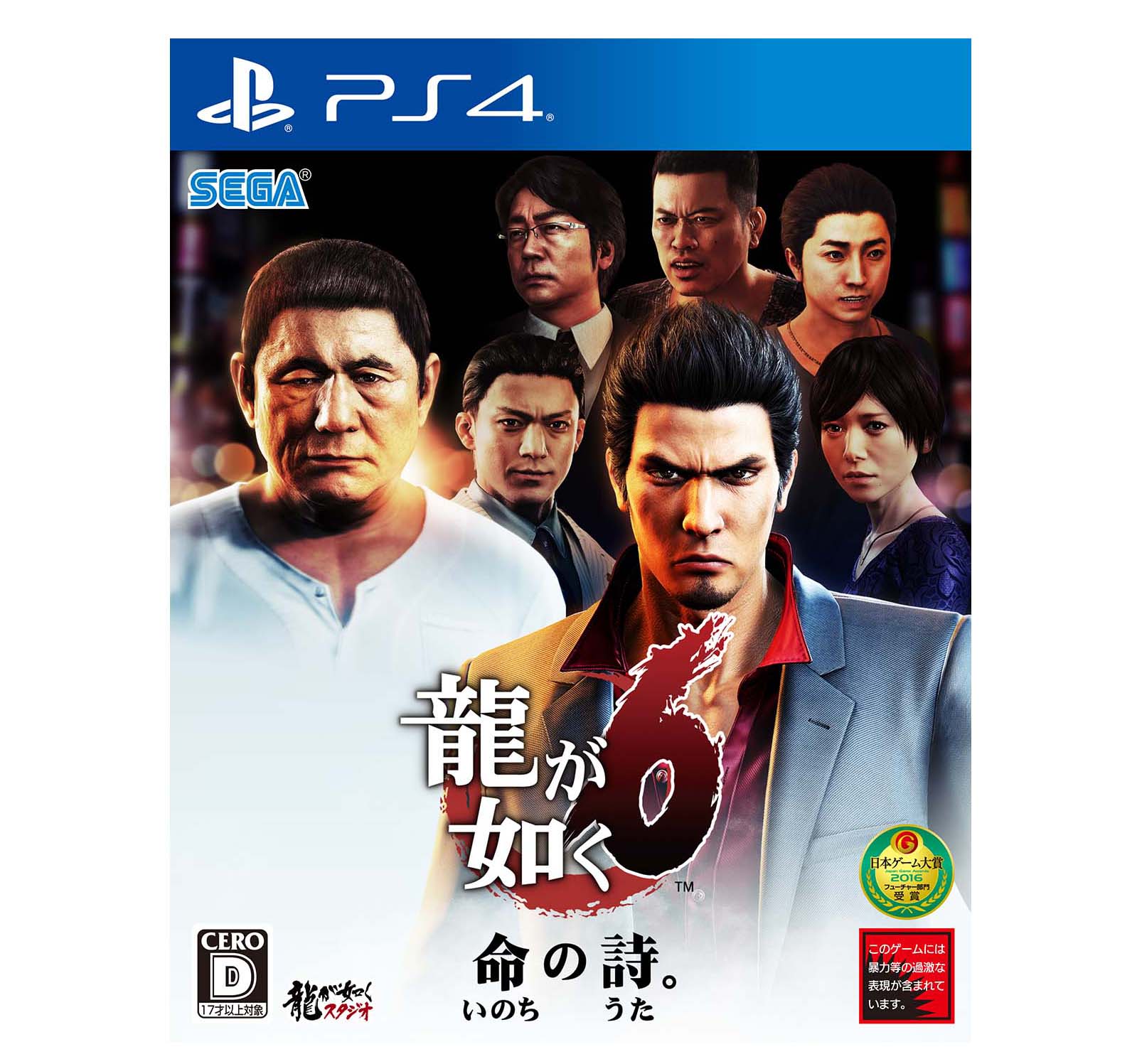
横山:
『龍が如く6』はなんといってもエンジンを作り替えようと決めたことが一番大きいです。発売の約3年前から、「ドラゴンエンジン」という全く新しいゲームエンジンの開発を進めていました。ゲームエンジンは簡単に言えばゲーム制作に必要な機能を一つにまとめたソフトウェアです。「龍が如く」規模のゲームをスピンオフなども含めて『龍が如く5』まで短いスパンでコンスタントに発売できた背景の一つに、シリーズもので同じキャラクターや街が登場するためデータの流用が可能なことがありましたが、ゲームエンジンを変えるとなれば、それまで蓄積したデータを流用できないため、「今まで使ったものは一旦すべて捨てること」になります。それでも、「ドラゴンエンジン」の開発に踏み切ったのは、どんどんと技術革新が進む中、その場しのぎのやり方ではなく、5年先でも通用するものを作らなければ今後立ち行かなくなる、という危機感からでした。
阪本:
PS4という新しいプラットフォームが出てきて、ここから先の表現力をどう高めようかと考えた時、今までの作り方だとこれ以上のことができないことが、『龍が如く5』までの開発でわかってしまったんです。
横山:
それまでは目の前だけを見てがむしゃらにやっていましたが、これから先も「龍が如く」を進化させ続けていくためには、「龍が如く」に完全に特化したゲームエンジンが必要と判断しました。ゲームエンジンを新たに開発するというのは、デザインデータも含めてすべて一から作り直す必要があるため、非常に時間がかかります。実は、それまでの間、ユーザーの皆様をお待たせするわけにはいかないので、『龍が如く 維新!』と『龍が如く0 誓いの場所』(以下『龍が如く0』)の2タイトルを発売したんです。
――「ドラゴンエンジン」の開発はゼロからのスタート。どんな点に苦労されましたか?
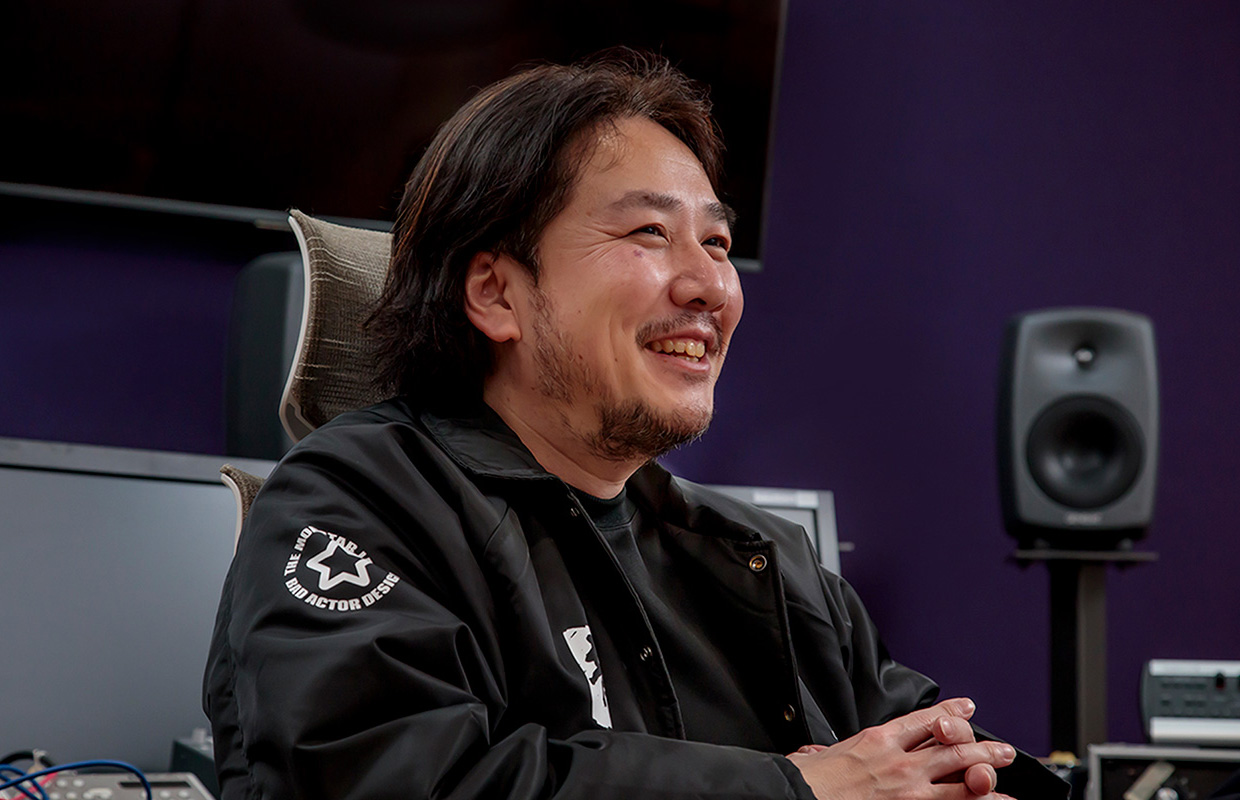
阪本:
『龍が如く 維新!』の開発終了後、他のメンバーが『龍が如く0』を開発している傍ら、ゲームグラフィックスの基礎研究などを進めていました。暗中模索しながら手探り状態でのゲームエンジン開発で、ナンバリング1作目の『龍が如く』をつくったときに限りなく近い感覚でした。『龍が如く6』がどんな内容になるか決まっていない中で、より高度な映像表現や機能など、必要となりそうな要素をいくつも想定しながら、技術要素を一つひとつ積み上げていく地道な作業を約3年間続けました。
その一方で「ゼロからつくるのだからとことんこだわろう」という覚悟を持ってプログラムチームと一丸となって取り組みました。
完成したドラゴンエンジンを採用した『龍が如く6』では、イベントシーンからバトルシーンなどにおいて、それまでとは一線を画するシームレスな遷移を実現することができました。また、それまでは建物や看板に対してキャラクターが大きかったものをリアルな採寸にするなど細部にも徹底してこだわることができました。結果、プレイヤーが『龍が如く6』の舞台となっている架空の街、神室町や尾道仁涯町で、主人公として「龍が如く」の世界観に没入できる作品に仕上げられたのではないかと思っています。
横山:
もう一つ、「ドラゴンエンジン」によってリアルタイムの物理制御を実現できるようになりました。例えば、『龍が如く5』まではバトルシーンで相手を攻撃したときに別の要素で判定を処理していたものを、きちんと相手に攻撃が当たったかどうかを判定できるようになったことで、失敗と成功が生まれるなど、緊迫感あるアクションを体験できるようになった。そうした点からもプレイ体験の底上げを図ることができたのは「ドラゴンエンジン」の開発があったからこそなんです。
――チャレンジの一方で、『龍が如く6』は“桐生一馬伝説、最終章”と銘打っています。その心というか意図についてお伺いできますか?
横山:
シリーズの5年先を見据えて「ドラゴンエンジン」の開発を進める一方で、これまでシリーズの主人公を務めてきた桐生一馬に終止符を打つ、これって二律背反ですよね(笑)。技術的には将来に向けてやりたいことがある中で、「龍が如く」を終わらせることに近いゲームを作るという難しさはありました。でも『龍が如く6』では桐生一馬が単独で主人公をつとめる作品は終わると決めてやっていたんです。
――なぜここで終わらせようとしたのでしょうか?
横山:
正直なところをいうと、実は、桐生一馬を主人公にすることは、いろいろと足かせが多いんです。彼のパーソナリティは変えられないので、桐生一馬がしないだろうことはできない。また、それまで「龍が如く」シリーズは、桐生一馬の人生で起こることを全部書こうと思ってやっていたのですが、これが『龍が如く6』までで描き切れたと思えました。長く続けたシリーズものを終わらせるタイミングは難しいですが、ドラマ性が高いタイトルだからこそ終わりがあるべきだと考え最終章としました。
主人公交代とゲームジャンル変更でイノベーションを
――『龍が如く7』の新たな主人公・春日一番は、どのような経緯から生まれたのでしょうか。
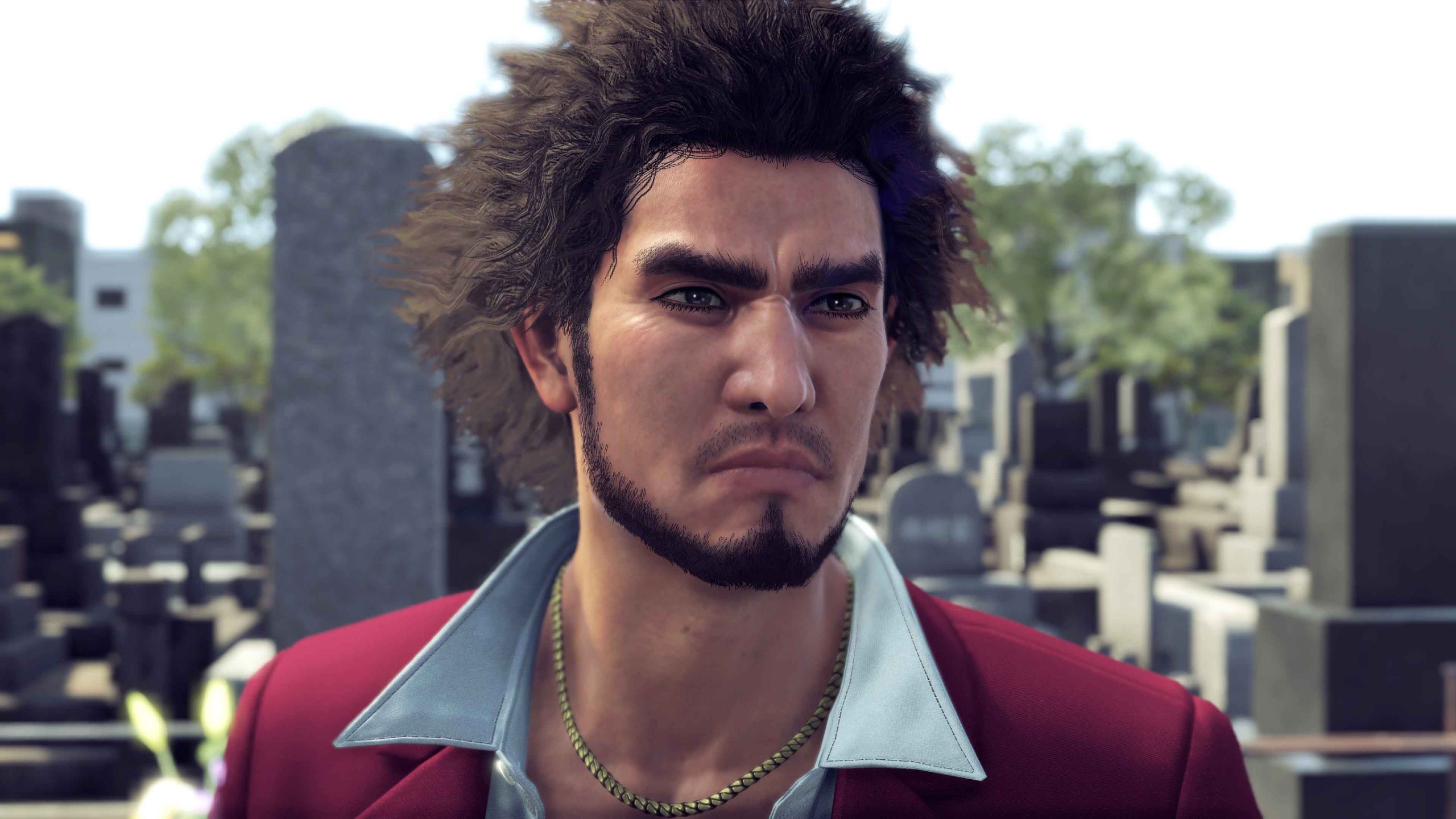
横山:
まずは、桐生一馬の話を終わらせてしまったので、新しい主人公にしなくてはいけない、というところからのスタートで、どんな主人公にするかを決めるのに、1年ほどかかりました。当時、『龍が如く ONLINE』というスマートフォン向けのゲームを別事業部と組んで開発していたところ、その主人公である春日一番が「なんかいいよね」と社内で好評で、さらにリリース後には実際にユーザーからも高い支持を受け、手応えを感じました。そこで、彼を主人公にした新シリーズをスタートしようとした矢先に激震が走りました。
――企画が社内審査に落ちたと伺いました。
横山:
当時の社長に、「これでは何のイノベーションもなく、成功する未来が見えないので駄目だ」、とガツンと言われて、あっさり落とされたんです。「龍が如く」はシリーズとして確立してからは、新作の企画が社内審査に落ちることはまずなかった。続編をつくると言えば、それだけで社内審査に通るような作品だったからです。
当初の企画は、それまでの「龍が如く」と同じアクションアドベンチャーであり、どこかで「このままでいいのか、主人公とストーリーが変わっただけで果たして成功するのだろうか」と心の中でモヤモヤした気持ちがあったため、社長の言葉は腑に落ちるところがありました。社長としては、この企画を投資として成功させる必要がある。そうした目線から、このまま進めたら失敗すると冷静に判断していると思ったんです。帰る道すがら、既に阪本に、「『龍が如く7』をRPG(ロールプレイングゲーム)にしよう」と話しをしていました。以前から、「龍が如く」は、ストーリー重視のRPGとの親和性がいいと考えてはいたので、変えるのは今しかないと思いました。
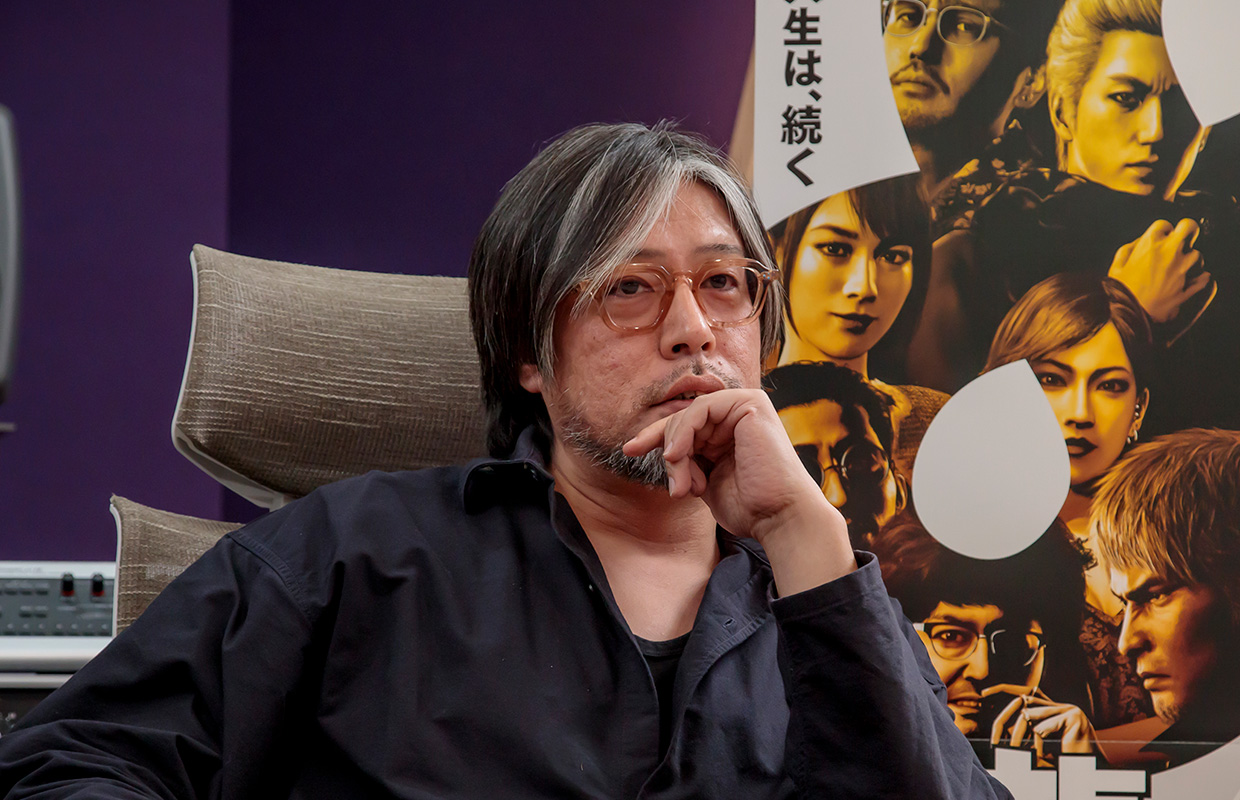
その日の晩に企画書を練り直し、新規ユーザーの取り込みも視野に入れたRPG版『龍が如く7』を「これなら投資する価値があると思いませんか?」と社長に再提案したところ、「チャレンジがあるし、イノベーションがある」と言ってくれて、審査に通りました。
ゲーム作りはクリエイターだけが考えてやっていると思われがちですが、実は会社組織が変えてくれることも往々にしてあるんです。ナンバリング1作目の『龍が如く』の開発では里見会長がプロジェクト自体を救ってくれたし(前編参照)、『龍が如く7』ではこの企画審査がきっかけで変わることができました。
成功している作品の主人公もゲームジャンルも“変える”、その一歩を踏み出す勇気を持つことはなかなか難しいですが、「龍が如く」シリーズの未来に向けては必要な革新でした。このきっかけがなければ、今の「龍が如く」は存在していないかもしれません。
――ゲームジャンル変更はどのくらいリスキーなことなのでしょうか?
横山:
例えば、牛丼チェーン店が「明日から牛丼を止めて、鳥丼を販売します」というのに近いかもしれません。お店のファンは牛丼が食べたくて行くのに鳥丼しかなければ、もうこなくなる。自然とファンは離れていきますよね。現に、7作目をRPGだと発表したところ、国内外のファンから「なんでRPGに変えたんだ!」と拒否反応が大きく、大逆風が吹いていました。ですが、実は我々がもっと恐れていたのが、主人公の交代に対する反発でした。
「龍が如く」はそのストーリーや桐生一馬という人物に魅せられているファンが圧倒的に多かったので、新たな主人公が嫌われたらすべてが終わります。主人公とゲームジャンルを変えても、「龍が如く」が「龍が如く」であり続けられるか、一か八かの勝負でした。これは運がよかったことも往々にありますが、RPGと大々的に発表したところ、RPGに対する反発は大きかったものの、主人公への反発はほぼありませんでした。人はふたつのことを同時に拒絶することはなかなかないのでしょうね。そこで春日は救われたんです。そして、開発チーム内では、完成した『龍が如く7』に対し、主人公が変わりRPG版となってもまぎれもなく「龍が如く」だと確信しており、売れる自信がありました。
結果、RPGへのジャンル変更についての紛争がユーザーやメディアの中で大変盛り上がったため、大注目の中で発売日を迎えることができました。無風のところにはいくら頑張っても風は立たないですが、逆風でも風が吹いていればそれを追い風にすることができるんです。この大反発は発売とともに、一気に追い風になりました。2020年1月16日に発売すると、「おもしろい!」と口コミでどんどん評判が広がっていき、マルチプラットフォームに対応したことも奏功し、国内のみならず全世界でヒットとなりました。当初の企画ではこんなに話題にはならなかったと思うので、やはりRPGにした選択は間違っていなかったですね。
1週間で100万本を突破した最新作
――それから約4年後、2024年1月26日に最新作『龍が如く8』が発売され、わずか1週間で世界累計販売本数100万本を突破しました。この作品はどういうコンセプトで開発されたのでしょうか。
横山:
『龍が如く7』は、春日一番という新たな主人公の物語でしたが、桐生一馬のストーリーが『龍が如く6』まで続いたように、彼の人生、ストーリーはまだ続いていくのでそれを描くつもりでした。『龍が如く7』の後日談を、春日一番を通して描く形としたのが『龍が如く8』になりますが、このストーリー展開上、もう一つ描かなくてはならなかった要素が桐生一馬のその後でした。こういった構成上、春日のパーティーメンバーとして桐生がいるより、二人のストーリーを同時に展開させていきたかったため、2人の主人公という設定にしました。
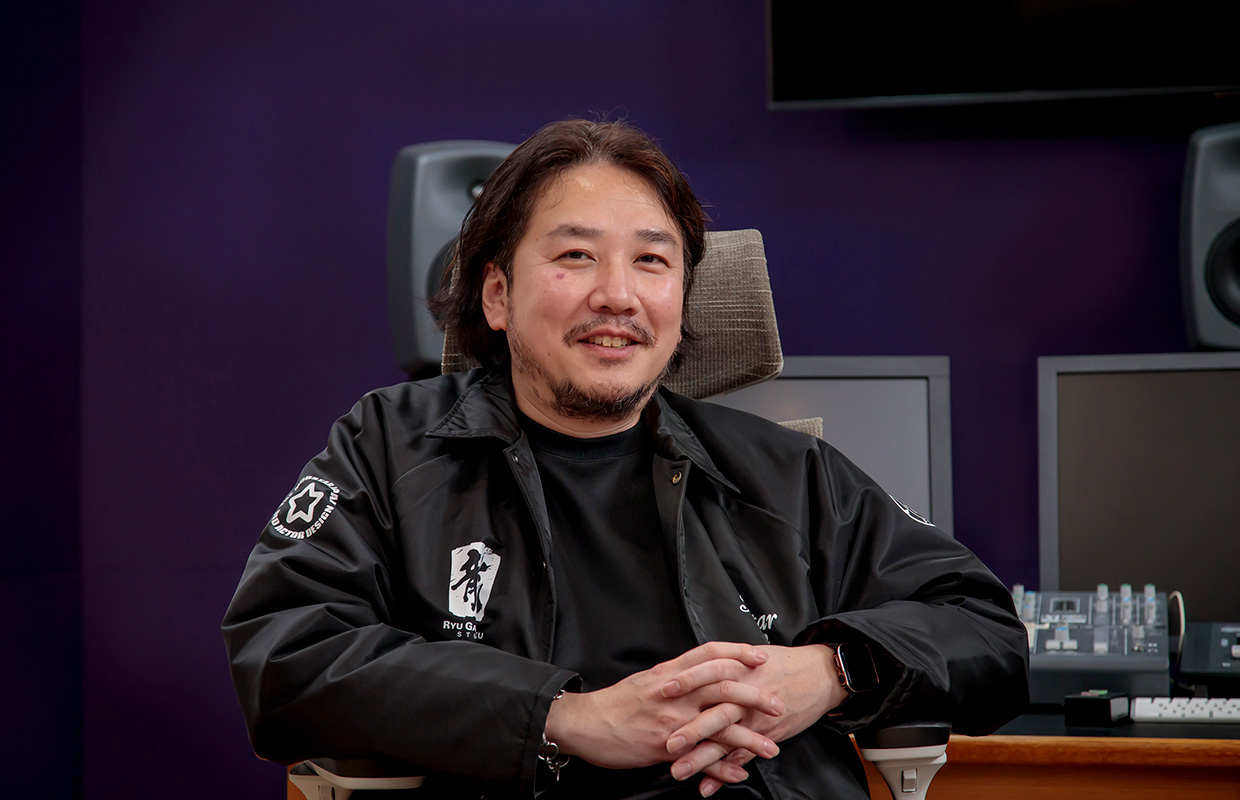
阪本:
また、『龍が如く7』で導入した、シリーズで培ってきた喧嘩アクションと、誰でも楽しめるRPGを融合させた新しいバトルシステム「ライブコマンドRPGバトル」は、誰もが簡単に楽しめるもので新規ユーザー獲得につながったのですが、改善の余地はまだまだありました。『龍が如く8』では、そうした課題をすべて洗い出して改善を図るとともに、さらに進化させた「新ライブコマンドRPGバトル」を導入することで、よりアクション性と戦略性、爽快感が増したバトルシステムを実現できました。
――当時、開発期間中はコロナ禍もあり大変だったのではないですか?
横山:
ストーリーの舞台となるハワイでの取材ができなくなってしまったため、現地のコーディネーターさんや映像制作会社にお願いしてカメラを回しながら歩いてもらい、Web会議システムを使ってその映像を見せてもらうというやり方で取材を進めました。約7割はこうしたリモートでの取材でしたね。その後、渡航制限が解除されたタイミングで、細部を確認するために我々も現地に赴きました。これまで以上に、多くの方々の協力がなければ成し得なかった開発でした。
より多くのユーザーに届けるために
――『龍が如く7』以降は、マルチプラットフォーム対応や、全世界同時発売にも力を入れており、『龍が如く8』では、対応言語も大きく拡大したそうですね。
阪本:
マルチプラットフォーム対応については、『龍が如く0』がきっかけでした。『龍が如く0』で初めて「龍が如く」をSteamというパソコンのプラットフォームに向けて発売したところ、海外での販売数が大幅に伸び、これまでリーチできていなかった層がこれだけいたのかと実感しました。以降、拡大する海外市場に向けてマルチプラットフォーム対応に力を入れ始め、『龍が如く7』では、PlayStation4, Xbox One, Xbox Series X/S, Windowsにて同時発売をしたところ、売上の7割が海外を占めるまでになりました。
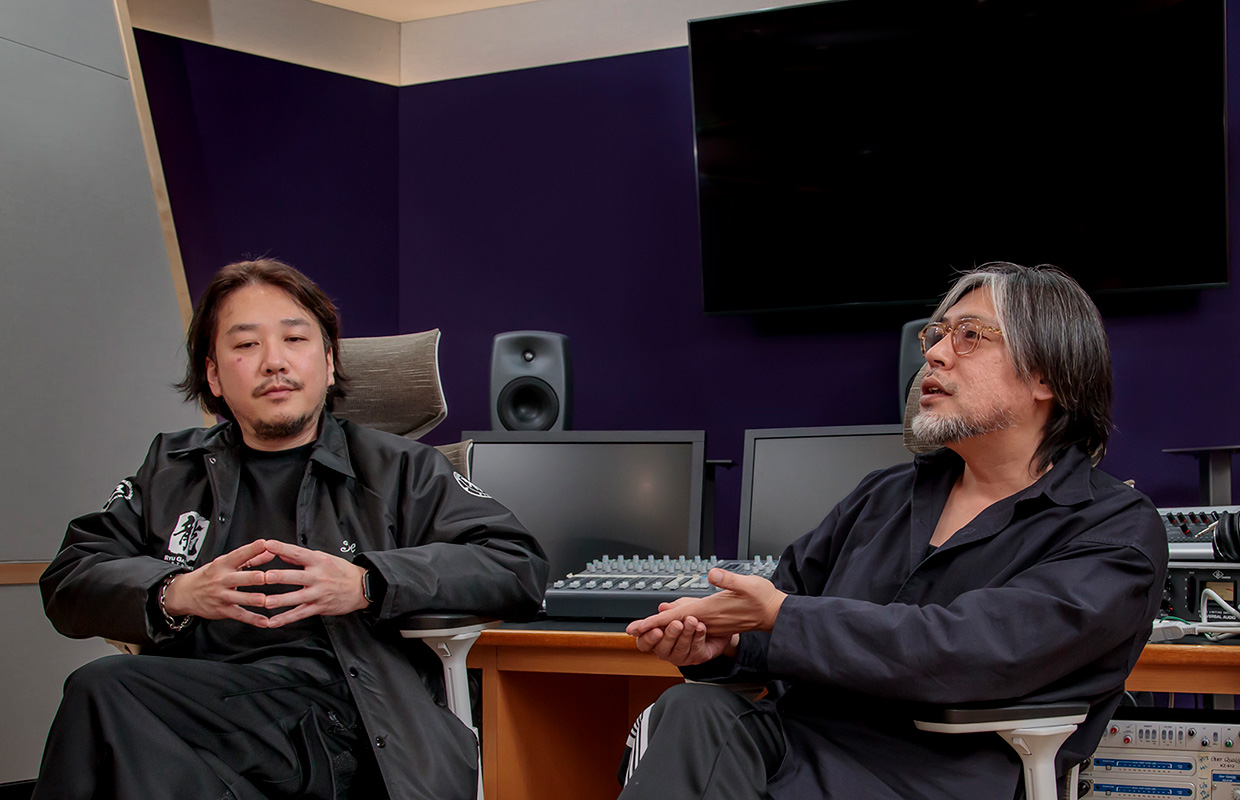
横山:
先ほど話した通り、『龍が如く7』はコロナ禍での発売でしたが、このくらいの時期からゲームがテレビのように「メディア」のひとつになったのではないかと思っているんです。たとえば、世界的に売れているゲームの中で海外のアーティストが新譜の発表をするなど、ゲームが文化の中心にあることが普通になってきました。ゲームはただプレイするだけのものではなくなり、動画を配信するユーザーや、それを見るだけのユーザーも出てきました。動画配信サイトやSNSなどを通してゲームプレイ動画を全世界どこでもすぐに見ることができてしまう中で、日本版発売後に海外版を開発し、何ヵ月後かに海外で発売しても、すでにネタバレしてしまっている。我々にとって、全世界同時発売は喫緊の課題でした。
――同時発売となると海外対応のスケジュールが大変ではないですか?
横山:
スピード面で言えば、翻訳の開始を早めればいいんです(笑)。以前はシナリオが完成してから翻訳を開始していましたが、現在はできた章から翻訳を開始するという同時進行に切り替え、音声収録も同様に進めています。このやり方だと無駄な待ち時間は削減できるものの、何度も声優の方に来ていただく必要があるので効率的でない部分も当然あるため、デリバリーと効率性の最適解を模索しているところです。
このように、開発の基準から変えていき、2021年発売の『LOST JUDGEMENT:裁かれざる記憶』(「龍が如くスタジオ」開発の別シリーズタイトル)にて、全世界同時発売をなんとか実現しました。以降、全世界同時発売をスタンダードとし、言語数の拡大を進めてきました。『龍が如く8』ではこれまで最大となる11言語※をサポートし、中国語版ではボイスオーバーも行った上で全世界同時発売を行いました。これも1週間で世界累計販売本数100万本突破という結果につながる一因となったのではと思っています。
現在、「龍が如くスタジオ」には、元々「龍が如く」シリーズのファンの海外人財が増えてきています。最近では、「龍が如く」が好きで「龍が如く」で日本語を覚え、日本に留学までして当社に入社し、開発に関わってくれているスタッフもいます。こうした人財も積極的に起用して、さらに多くのユーザーにグローバルでしっかりリーチしていくための体制を維持していきます。
※【音声】日本語 / 英語 / 中国語(北京語) 【字幕】日本語 / 英語 /簡体字 / 繁体字 / 韓国語 / フランス語 / イタリア語 / ドイツ語 / スペイン語 / ポルトガル語 / ロシア語
「龍が如く」というゲームジャンル
――作品を追うごとにファンを拡大し続けている「龍が如く」ですが、その中で変わらないこだわりがあれば教えてください。
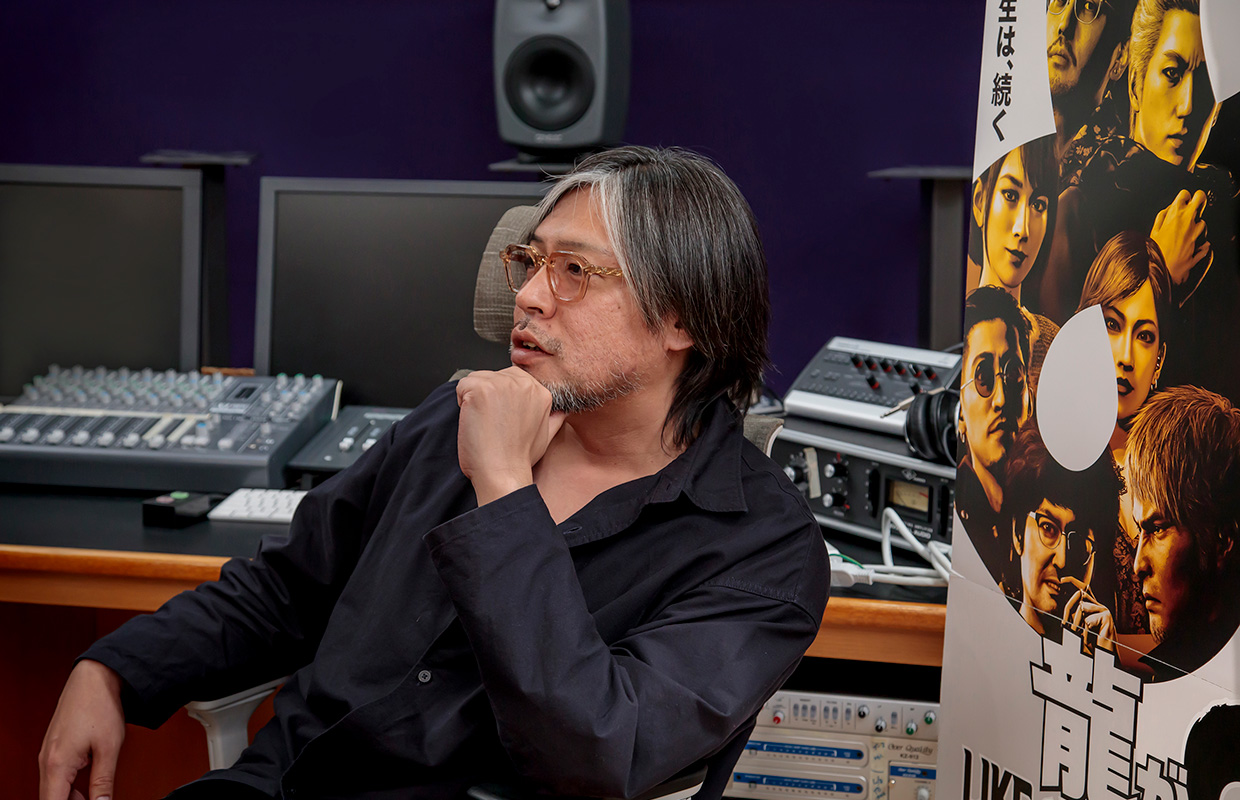
横山:
実は「龍が如く」では、現役の裏社会の人間を主人公にしたことは一度もないんです。我々はドラマや事件が起こりやすいから裏社会を舞台に選んでいるのであり、決して裏社会で生きている人びとをかっこよく見せたいわけではありません。ゲームは能動的なメディアのため、プレイヤーに影響を与えてしまうことがある。我々が作るゲームによって若い子たちが裏社会に憧れるような事態がないようにしなくてはならないと考えています。
そのため、シリーズ一作目から「破門や引退などで裏社会とは縁を切った主人公とする」「主人公は相手に絡まれないと決して殴れない」「子どもの死や薬物は絶対に登場させない」といったルールを自分たちに課しています。正直、ストーリーを展開するうえでは足かせとなりますが、こういう題材を扱う上での我々のポリシーとして貫いています。
また、【前編】でも話したように、「龍が如く」は、我々自身がやりたい、面白いと思うゲームを大前提に開発しています。たとえば、最近はありがたいことに女性ユーザーも増えてきていますが、それを汲んでゲームの内容を変えるようなことは一切ありません。実際、自分たちがかっこいいと思って作ったキャラクターが、そのまま女性人気につながっていたりするので、結局いいものを作れば性別も年齢も関係なく伝わるのだと考えています。ですので、我々がワクワクするもの、もっと言えば、我々作る側が飽きないものを作ることを意識しています。自分たちが飽きないために刺激のあることをしたいと思うと、そこからいいアイディアが生まれてくるんです。
――もう一つお伺いしたいのですが、ズバリ「龍が如く」とは何でしょうか?
阪本:
これは言語化するのが難しいのですが、やはり「龍が如く」っぽさ、に尽きるのではないかと思います。ゲームをプレイした後に「どんな体験をしたか」と考えたとき、今までに出ている様々な「龍が如く」タイトルをプレイした時と同じような満足感や体験談が残るんです。
横山:
正直、「龍が如く」は、もうゲームジャンルに近いものになれているのではないかと思っています。RPGのように、「龍が如く」というジャンルのゲームをやったという感じ。だって、主人公だけでなくジャンルまで変わっても、「龍が如く」になるんですから。
阪本:
これを支えているのが、「龍が如くスタジオ」なのかもしれません。昔は本当に1チーム100名程度で作っていたのですが、現在、「龍が如くスタジオ」には1作目を知るベテランから若手まで、300名ほどの幅広いメンバーが活躍しています。若手がベテランから学んだり、ベテランが若手のサポートをしたりしながら、世代交代が進む中で自然と「龍が如く」らしさの根源が継承されているのではと感じています。
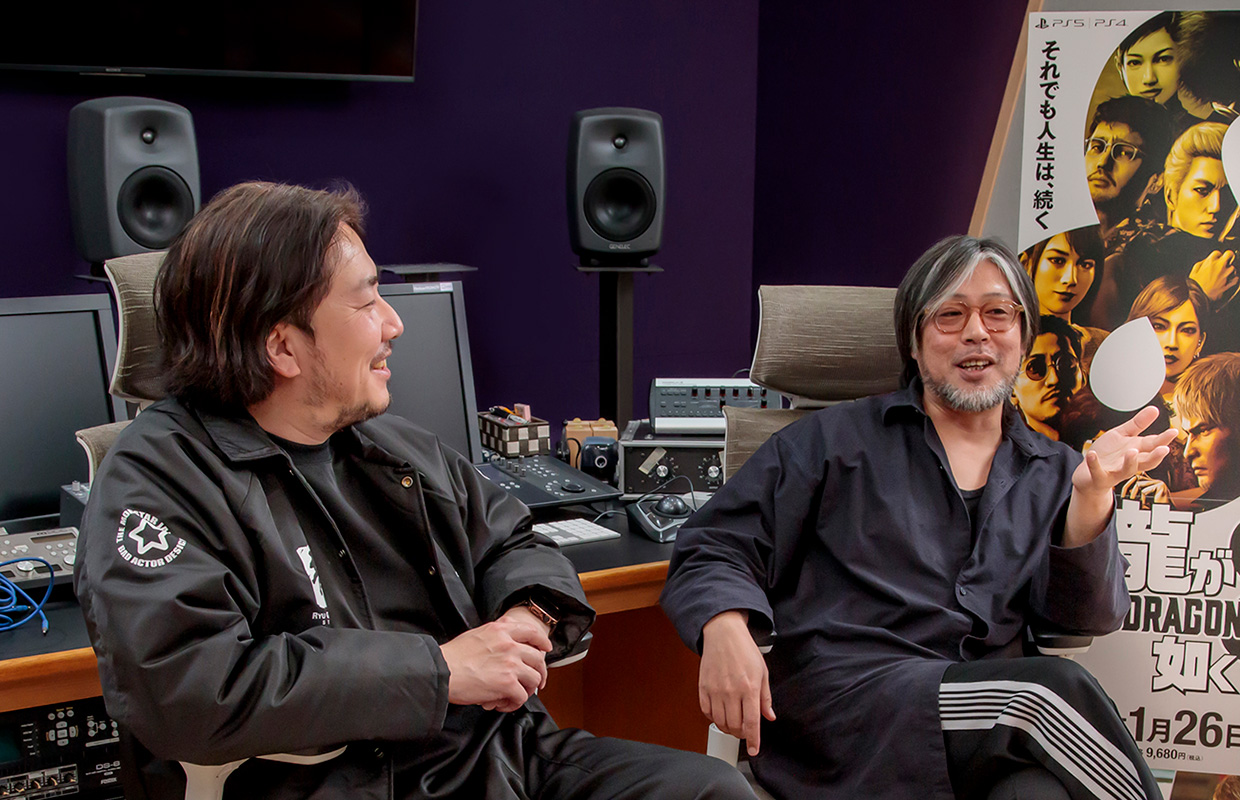
横山:
また、3年ほど前から「龍スタTV」という公式の配信番組を始め、ゲームについての紹介はもちろん、メイキング動画など我々がゲームを開発して発売するまでの過程などを外部に向けて発信しています。もともとファンや新規ユーザーに向けた施策だったのですが、「龍が如くスタジオ」とはどういうスタジオか、どうやってゲームを作っているのかが見えるようになり、それを見て「龍が如くスタジオ」で働きたいと入ってくるスタッフも多い。このように「龍が如く」というものがしっかり伝わっている人たちがどんどん増えてきているのも大きいです。
こうした龍が如くスタジオの一貫したポリシーや姿勢によって、主人公の交代やジャンルの変更があっても、スピンオフになっても、これは「龍が如く」だと思ってもらえるゲームを作り続けることができているのだと思います。
エンタメは売れて初めて価値となる
――最後に、今後の展望をお聞かせください。
横山:
やはりユーザーの皆さんが全く想像できない、未知の感動体験を届けたいという気持ちは大きいです。それには、「3年後の我々がおもしろいと思う」ゲームをつくらなければならない――ゲーム開発は未来予想に近いかもしれません。例えば、「龍が如く8」にはVTuberが登場するのですが、シナリオ段階では彼らが2024年の世の中でどんな影響力を持っているかを予想しながら書き進めていました。“未来の旬”を読む難しさはありますが、皆さんが思いつかない新しいゲームを作るため、果敢に挑戦していきたいと思います。
阪本:
世界中のファンを飽きさせないように、今後も誰もが想像もし得ないような「龍が如く」を作り続けなければならないと思っています。日進月歩で進む技術をしっかり取り入れつつ、3年後にも驚きのあるゲームを作り続けるために、綿密な計画を立てて、忍耐強く地道に努力していきたいと思います。
横山:
また、我々は革新と安定という二つの顔を持っていると思っています。誰もが考え付かないような新作に常にチャレンジしつつも、まだ世界中にきちんと届けられていない過去作などについて、年月をかけて着実に展開していくつもりです。エンタテインメントは売れて初めて価値になると考えていますので、それを肝に銘じつつ、成長と安定のバランスを取りながら、新しい作品をお届けしていきます。是非、今後の「龍が如く」に期待してください。
「龍が如く」の発売から、コロナ禍の2021年3月期をのぞき、毎期主力タイトルを発売し続けた「龍が如くスタジオ」の歴史
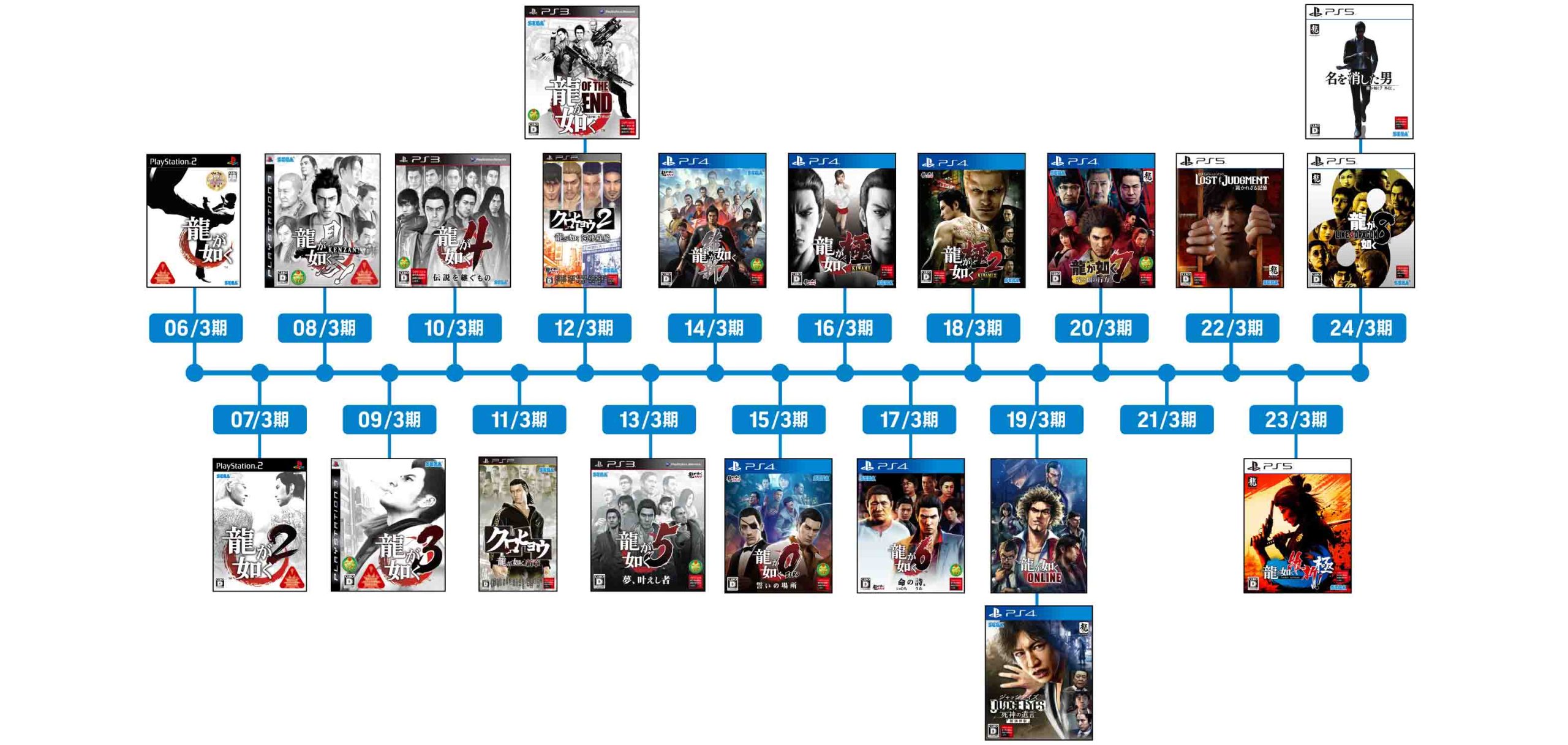
※代表的なタイトルを抜粋したものです
©SEGA
-
株式会社セガは、今後もゲームをはじめとした幅広いエンタテインメントを通じて感動体験を創出し、世界中の人々に最高のエンタテインメント体験をお届けしていきます。
当記事の前編は以下よりご覧ください。


